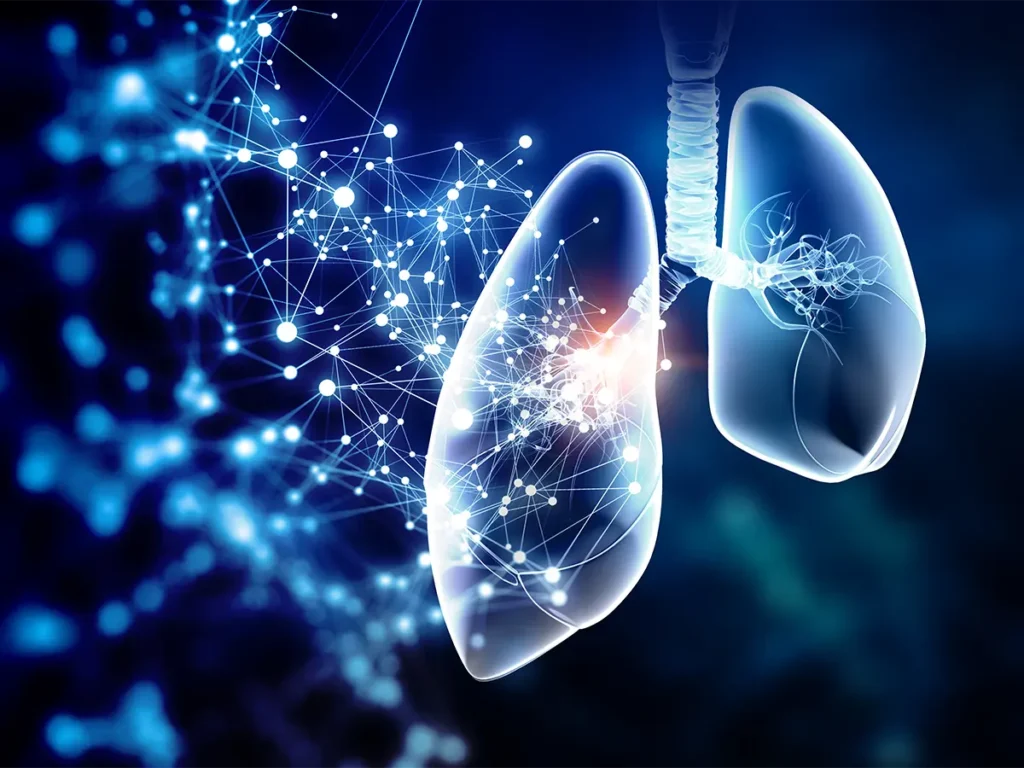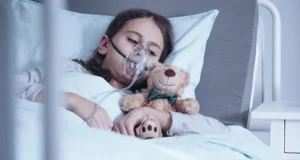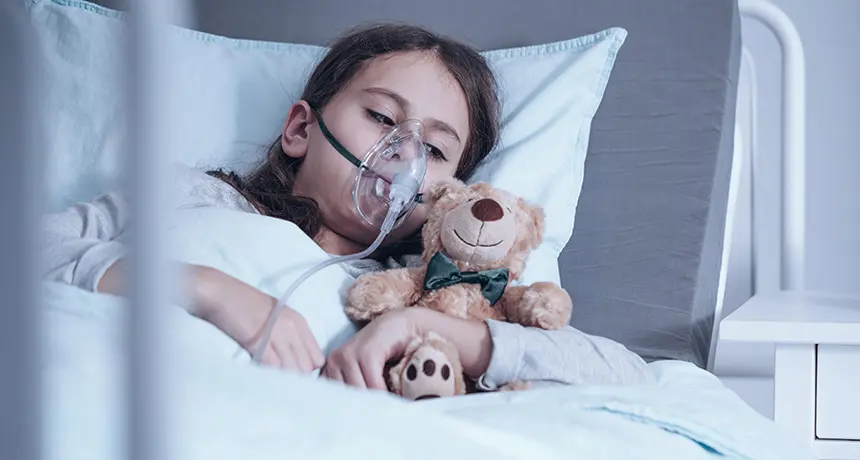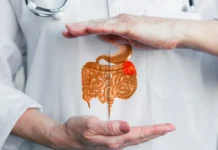Cystic fibrosis affects over 60,000 individuals globally, with nearly half of them residing in the United States. This hereditary condition impacts the respiratory and digestive systems of children and young adults, depriving them of breath and the ability to derive energy from food.
Dr. Julie A. Biller, an Associate Professor of Medicine at the Medical College of Wisconsin, specializes in the fields of cystic fibrosis and pulmonary medicine. She dedicates her efforts to working with cystic fibrosis patients aged 12 and above, serving at both the Pulmonary Medicine Clinic at Froedtert & Medical College and the Pulmonary Clinic at Children’s Hospital of Wisconsin.
Despite Breakthroughs, Cystic Fibrosis Answers Remain Elusive
According to Professional cystic fibrosis doctors, “The highest prevalence of this disorder is observed among individuals of Caucasian descent with origins in Central or Northern Europe. Folklore from that region once believed that babies who tasted salty from their mothers’ kisses would not lead long lives. This notion might be one of the earliest references to cystic fibrosis, as individuals with this condition often exhibit saltier sweat.”
It wasn’t until 1938 that Dr. Dorothy Anderson, a pathologist at Columbia University, published the initial clinical accounts of cystic fibrosis. During that era, children affected by CF typically did not survive beyond infancy. However, due to advancements in medical knowledge and treatments, the life expectancy of individuals with cystic fibrosis has steadily risen. Professional cystic fibrosis doctors mention, “A computational model currently projects a median survival age of 40 for a child born with cystic fibrosis today.
What Is Cystic Fibrosis?

Cystic fibrosis (CF) is a hereditary disease characterized by chronic progression and often fatal outcomes. It primarily impacts the mucus glands in the body, particularly the respiratory and digestive systems of children and young adults. Additional involvement is commonly observed in the sweat glands and reproductive system.
The average life expectancy for individuals with CF is around 30 years. A condition similar to CF has been recognized for over two centuries, and the term ‘cystic fibrosis of the pancreas’ was initially used to describe the disease in 1938.
How Common Is CF?
Based on data compiled by the Cystic Fibrosis Foundation, there are approximately 30,000 individuals in the United States, 3,000 in Canada, and 20,000 in Europe living with CF. While the condition predominantly affects individuals of Caucasian descent from northern European origins, it does impact people of all racial and ethnic backgrounds.
Consequently, it is less prevalent among African Americans, Native Americans, and Asian Americans. About 2,500 babies are born with CF annually in the U.S. Moreover, roughly 1 out of every 20 Americans carries a non-affected abnormal “CF gene,” totaling around 12 million individuals who often remain unaware of their carrier status.
The Facts about Cystic Fibrosis
 Cystic Fibrosis (CF) is an enduring and gradual degenerative hereditary ailment impacting the mucus-producing glands. As per data from the Cystic Fibrosis Foundation, around 30,000 individuals in the United States, 3,000 in Canada, and 20,000 in Europe have been diagnosed with CF. Predominantly affecting the respiratory and digestive systems of youngsters and young adults, CF also commonly involves the sweat glands and reproductive system. Those afflicted with CF generally have an average life expectancy of around 30 years.
Cystic Fibrosis (CF) is an enduring and gradual degenerative hereditary ailment impacting the mucus-producing glands. As per data from the Cystic Fibrosis Foundation, around 30,000 individuals in the United States, 3,000 in Canada, and 20,000 in Europe have been diagnosed with CF. Predominantly affecting the respiratory and digestive systems of youngsters and young adults, CF also commonly involves the sweat glands and reproductive system. Those afflicted with CF generally have an average life expectancy of around 30 years.
While CF is most prevalent in individuals of Caucasian descent with roots in Northern Europe, it does manifest across all racial and ethnic backgrounds. In the United States, roughly 2,500 newborns are diagnosed with CF annually, and roughly 1 out of every 20 Americans carries an atypical “CF gene” without experiencing any negative effects. For the most part, these 12 million carriers are not cognizant of their carrier status.
What are the Signs and Symptoms of Cystic Fibrosis (CF)?
Infants born with CF genes commonly exhibit symptoms within their first year of life, although in some cases, signs of the condition might not manifest until adolescence or even later stages. The presentation of CF symptoms can vary widely among affected children.
If infants or young children experience persistent diarrhea, bulky and unpleasant-smelling greasy bowel movements, frequent wheezing or pneumonia, chronic coughing accompanied by thick mucus, salty-tasting skin, or inadequate growth, it is recommended to undergo CF testing. Moreover, CF should be considered in newborns with a bowel obstruction known as meconium ileus.
While CF’s manifestations can differ across patients, the underlying issue remains consistent: an anomaly in the glands responsible for generating and releasing sweat and mucus. Sweat serves to regulate body temperature, while mucus lubricates the respiratory, digestive, and reproductive systems, preventing tissue desiccation and aiding in protection against infections. Individuals with CF excessively lose salt through sweat, potentially disrupting the mineral equilibrium in the blood and giving rise to irregular heart rhythms and even the possibility of shock.
In CF patients, the mucus tends to be extraordinarily thick and accumulates in the intestines and lungs, leading to malnutrition, stunted growth, recurrent respiratory infections, breathing challenges, and eventually irreversible lung damage.
Cystic Fibrosis (CF) also gives rise to a spectrum of other medical issues, including sinusitis, nasal polyps, clubbing (enlargement and rounding) of fingers and toes, pneumothorax (lung tissue rupture), hemoptysis (coughing up blood), cardiac enlargement, abdominal pain and discomfort, and rectal prolapse. In certain cases, CF can lead to liver disease, diabetes, pancreatic inflammation, and the development of gallstones. Among most patients, lung disease is the primary cause of mortality.
Respiratory and Digestive Difficulties
“Recurrence of lung and sinus infections is a common aspect of CF,” notes a professional cystic fibrosis doctor. “During childhood, prevalent symptoms often comprise coughing, recurrent bronchitis, pneumonia, and sinusitis.” Over time, the repetitive infections exact a toll on patients’ lung tissue, frequently leading to lung failure, a significant contributor to mortality.
Beyond respiratory manifestations, a noteworthy 85% of individuals with CF experience pancreatic insufficiency, which hampers the entry of digestive enzymes into the stomach for food breakdown. Consequently, weight loss, malnutrition, and frequent, unpleasant-smelling bowel movements transpire.
Among the array of symptoms, one can also encounter nasal polyps, swelling and enlargement of fingers and toes, coughing up blood, enlargement of the right heart chamber, abdominal discomfort, flatulence, and rectal prolapse. Some individuals with CF contend with liver ailments, diabetes, pancreatic inflammation, and gallstones.
Genetic Breakthroughs
 “The identification of the CF gene emerged in 1989, propelled by innovative and state-of-the-art technology,” clarifies a professional cystic fibrosis doctor. “The molecular genetic techniques developed to pinpoint the CF gene not only transformed our comprehension of CF but also paved the way for insights into various other genetic disorders. In this context, CF stands as a significant watershed in the realm of diseases.”
“The identification of the CF gene emerged in 1989, propelled by innovative and state-of-the-art technology,” clarifies a professional cystic fibrosis doctor. “The molecular genetic techniques developed to pinpoint the CF gene not only transformed our comprehension of CF but also paved the way for insights into various other genetic disorders. In this context, CF stands as a significant watershed in the realm of diseases.”
However, an underlying enigma remains. “While we’ve discerned the genetic anomaly responsible for CF and the resulting biochemical aberration, the precise mechanism behind the development of lung disease in CF patients remains elusive,” explains a professional cystic fibrosis doctor.
CF follows a “recessive” mode of inheritance. Professional cystic fibrosis doctors elaborate, “To manifest the disease, an individual must possess two copies of the abnormal gene, one from each parent. Those with one copy of the abnormal gene are referred to as ‘carriers,’ showing no symptoms. Quite often, carriers can unknowingly pass on the CF gene to their offspring.”
The inheritance pattern of CF can be outlined as follows: When two carriers have children, the likelihood of having a child with the CF gene is one in four. Similarly, there’s a one in four chance that the child won’t carry the CF gene at all. The odds are two in four that their children will be carriers.
The severity of CF varies considerably among patients. “We’ve identified a minimum of 1,000 distinct CF genes,” notes professional cystic fibrosis doctors, “and the genetic anomalies differ among individuals—some cases are mild, while others are more severe. Yet, deducing the severity solely from a patient’s genetic makeup isn’t always possible.”
Thanks to Wisconsin’s involvement in newborn CF screening, diagnosis usually occurs at around six weeks of age, in contrast to the national average of 12 to 18 months, as indicated by Professional cystic fibrosis doctors.
Four Categories of Treatment for Cystic Fibrosis
There are four main categories of treatment for cystic fibrosis (CF), encompassing nutrition, airway clearance, medication, and, in certain cases, lung transplantation. According to Professional cystic fibrosis doctors, addressing nutrition is vital due to the prevalence of pancreatic insufficiency among CF patients.
“Ensuring that our patients consume adequate calories to maintain a specific body weight range is of utmost importance,” says Professional cystic fibrosis doctors. In instances where this becomes challenging, nutritional supplements are administered orally or through gastrostomy tubes while the patient sleeps. Additionally, medications are available to compensate for deficient pancreatic enzymes.
The Removal of Thick Mucus Laden with Infections
Professional cystic fibrosis doctors detail a range of techniques taught to CF patients for airway clearance. These methods aid in the removal of thick mucus laden with infections from the respiratory passages. Most techniques involve the use of specialized breathing devices to agitate the airways and loosen the mucus, combined with controlled coughing or forced expiration to expel the accumulated material from the lungs.
The Utilization of Antibiotics
Treatment of CF involves the utilization of antibiotics, medications designed to liquefy airway secretions, and anti-inflammatories. Professional cystic fibrosis doctors highlight an innovative method of antibiotic delivery through a nebulizer, allowing patients to directly inhale medication into their respiratory passages. Additionally, oral or intravenous administration of antibiotics is employed in cases of severe illness.
Extraction of Normal Enzymes or Proteins Produced by the Body
Recent advancements in CF treatment encompass medications developed through recombinant technology to facilitate the dissolution of airway secretions. Professional cystic fibrosis doctors elucidate this process, which involves the extraction of normal enzymes or proteins produced by the body, followed by their cultivation in microbes to yield larger quantities. Patients then inhale these substances to effectively thin and liquefy the mucus. A notable example is Pulmozyme, also known as DNase, which serves to reduce mucus thickness.
Application of Inhaled Corticosteroids as Anti-inflammatory Agents
Similar to the treatment of asthma patients, CF treatment involves the application of inhaled corticosteroids as anti-inflammatory agents. Professional cystic fibrosis doctors also draw attention to the potential anti-inflammatory properties of the antibiotic Zithromax (azithromycin), explaining that it has garnered interest within the CF treatment paradigm.
Additionally, certain CF patients may be prescribed higher doses of ibuprofen. Professional cystic fibrosis doctors underscore that lung transplantation remains the ultimate consideration for CF patients when other options have been exhausted.
Medical College Research Continues
The Medical College and Children’s Hospital are actively engaged in an ongoing research endeavor funded by the National Institutes of Health (NIH) aimed at evaluating the effectiveness of the CF newborn screening program.
This study is dedicated to ascertaining whether early intervention genuinely leads to improved outcomes and whether it offers cost-effective benefits. Researchers from the Medical College are also delving into the development of antibodies against pseudomonas.
Professional cystic fibrosis doctors elaborate, “Pseudomonas is a particularly virulent microorganism that tends to inhabit the respiratory systems of individuals with CF. The overarching objective of the NIH-backed study is to explore the feasibility of creating a vaccine to thwart the establishment of these pathogens.”
Further investigations by the Medical College of Wisconsin’s experts revolve around deciphering the precise composition of a thin layer of fluid that envelops the airways. Patients afflicted with cystic fibrosis exhale into specialized glass tubes, facilitating the analysis of the composition of the exhaled gases. This non-invasive approach holds the potential to yield insights into the lung damage characteristic of cystic fibrosis.
Navigating Life with the Cystic Fibrosis Condition
“We provide patients, their families, educational institutions, religious communities, and other groups with informative resources to assist them in managing the disease,” underscores Professional cystic fibrosis doctors. However, she underscores the significance of the extensive care required to maintain the health of CF patients.
“For most individuals with Cystic Fibrosis (CF), eating necessitates advance planning and the administration of a couple of medications beforehand. Moreover, they are on a regimen of additional medications, and we expect them to perform airway clearance twice daily, with each session spanning 15 to 30 minutes.” Regular clinic visits are also imperative for CF patients, who might experience intermittent bouts of illness or require hospitalization.
“In the grand scheme of things, many CF patients lead lives that resemble normalcy,” assure professional cystic fibrosis doctors. “We advise Cystic Fibrosis (CF) patients to embrace a one-day-at-a-time approach. Since nobody knows the extent of the time they have, our endeavor is to maximize each day to the fullest.”
Mutation of Cystic Fibrosis
 A study in Nature Communications presents a new antisense oligonucleotide (ASO) therapy targeting the W1282X mutation in the CFTR gene linked to cystic fibrosis (CF). This therapy counteracts the mRNA decay that hinders existing treatments. The ASO technology, known for controlling protein function, offers promise for CF treatment.
A study in Nature Communications presents a new antisense oligonucleotide (ASO) therapy targeting the W1282X mutation in the CFTR gene linked to cystic fibrosis (CF). This therapy counteracts the mRNA decay that hinders existing treatments. The ASO technology, known for controlling protein function, offers promise for CF treatment.
Adrian Krainer and colleagues propose a therapy involving a three-ASO cocktail to boost CFTR protein production, alleviating symptoms. Cystic Fibrosis (CF), a genetic disorder affecting over 80,000 people globally, results from deficient CFTR gene function, causing mucus buildup, respiratory issues, and infections. The approach stabilizes mRNA, aiding truncated CFTR protein production.
Although Cystic Fibrosis (CF) has various complications, treatments have improved, extending survival. The ASO strategy shows potential for genetic diseases, building on Krainer’s prior success in spinal muscular atrophy (SMA) treatment development. ASO therapies hold promise for CF and other conditions, with further exploration needed in aerosol delivery for enhanced efficacy.
How does a gene mutation cause cystic fibrosis (CF)?
The CF gene’s discovery in 1989 marked a significant milestone. Subsequent research has provided insights into the gene and its protein product. The biochemical irregularity in CF arises from a gene mutation affecting the production of the CFTR protein, which facilitates chloride ion movement through cell membranes. CFTR, present in lung, pancreas, colon, and genitourinary cells, becomes defective in CF, leading to chloride ion and water blockages as well as abnormal mucus secretion.
This mutation entails the deletion of three base pairs in the gene, causing the loss of an amino acid in the CFTR protein. Known as F508 CFTR due to its altered phenylalanine position, it explains around 70-80% of CF cases. Beyond F508 CFTR, over 400 different mutations have been identified, likely contributing to the remaining CF cases. Variations in disease patterns are attributed to a combination of specific mutations and unidentified factors in the patient’s genetic makeup and environment.
The Impact of CFTR Gene Changes on the Body
 Our genes can have different mutations that impact the body in various ways. Some mutations are insignificant or have no effect on health, similar to slight variations in wording in an encyclopedia entry that still convey the same meaning. In such cases, genes and resulting proteins may differ slightly, leading to different eye colors, but they function properly.
Our genes can have different mutations that impact the body in various ways. Some mutations are insignificant or have no effect on health, similar to slight variations in wording in an encyclopedia entry that still convey the same meaning. In such cases, genes and resulting proteins may differ slightly, leading to different eye colors, but they function properly.
However, certain mutations can cause genes to produce non-functional or absent proteins. Cystic fibrosis (CF) results from mutations in the gene responsible for the cystic fibrosis transmembrane conductance regulator (CFTR) protein. This protein controls the movement of salt and fluids in and out of cells in different body parts.
For individuals with CF, mutations in the CFTR gene disrupt the protein’s normal production or function, leading to the accumulation of thick mucus. This mucus buildup leads to persistent lung infections, damage to the pancreas, and complications in other organs.
CF follows a recessive pattern, meaning both copies of the CFTR gene must have mutations for CF to develop. People with a mutation in only one copy are CF carriers, without CF symptoms. About 10 million people in the US are carriers.
CF carriers can pass the gene mutation to their children, with the odds being:
- 25% (1 in 4) chance of the child having CF
- 50% (1 in 2) chance of the child being a carrier but not having CF
- 25% (1 in 4) chance of the child not being a carrier or having CF
Individuals with Cystic Fibrosis (CF) can also pass the gene mutations on to their children. If someone with CF has a child with CF, the chances are:
- 50% (1 in 2) chance of the child having CF
- 50% (1 in 2) chance of the child being a carrier but not having CF
Children of two carriers might also be carriers. In a family with four children, any combination of the children having CF, being carriers, or having neither condition is possible. Each child has an equal chance of inheriting CFTR mutations, irrespective of their siblings’ carriers or CF status. When a person with CF has children with a carrier, the children will either be carriers or have CF.
Cystic Fibrosis in Babies
 Newborns undergo CF screening tests to detect and address cystic fibrosis (CF) early. Blood samples collected at birth are tested for CF and other conditions. Abnormal results may lead to diagnostic tests like sweat tests to measure salt levels or genetic tests.
Newborns undergo CF screening tests to detect and address cystic fibrosis (CF) early. Blood samples collected at birth are tested for CF and other conditions. Abnormal results may lead to diagnostic tests like sweat tests to measure salt levels or genetic tests.
CF symptoms can vary from mild to severe in babies, including coughing, lung infections, salty skin, slow growth, and bowel issues. Treatment depends on symptoms and includes medicines like antibiotics, mucus thinners, bronchodilators, and more. Physical activity and therapies can help clear mucus.
For growth and digestion issues, many CF children need special medications to absorb nutrients. High-calorie meals and extra vitamins are essential. Teens may develop CF-related diabetes, which is managed with insulin shots. If necessary, lung transplants are a possibility. A dietician can assist with meal planning for healthy weight gain, and managing diabetes is vital to preventing further lung problems.
How is Cystic Fibrosis (CF) Diagnosed?
The primary examination employed to detect CF is known as the sweat test. This procedure gauges the concentration of salt in sweat. During this test, a region of skin, typically on the arm, is stimulated to perspire by utilizing a substance called pilocarpine coupled with a mild electrical current.
The treated skin is then covered with gauze or paper to gather the sweat, followed by encasement in plastic material. After a duration of 30 to 40 minutes, the plastic covering is removed, and the sweat sample is subjected to analysis. Elevated levels of sodium and chloride compared to the norm are indicative of cystic fibrosis in the individual.
A small subset of CF patients exhibit sweat chloride levels within the normal range. For them, diagnosis relies on chemical assessments to detect the presence of the mutated gene. In the case of newborns, whose sweat production may be insufficient, the sweat test may yield unreliable results. In such instances, alternative diagnostic methods come into play.
Additional tests that contribute to a CF diagnosis encompass chest X-rays, pulmonary function tests, and cultures of sputum (phlegm). Furthermore, stool examinations prove valuable in identifying the digestive irregularities commonly associated with CF.
How Is Cystic Fibrosis (CF) Treated?
 Currently, there is no remedy addressing the fundamental origins of CF, yet numerous medications are under investigation. In the interim, medical professionals can alleviate CF symptoms or decelerate the progression of the ailment, thereby enhancing the patient’s overall quality of life.
Currently, there is no remedy addressing the fundamental origins of CF, yet numerous medications are under investigation. In the interim, medical professionals can alleviate CF symptoms or decelerate the progression of the ailment, thereby enhancing the patient’s overall quality of life.
Individuals grappling with CF undergo a combination of antibiotic therapy and diverse interventions to alleviate the congestion of thick mucus within the lungs. In certain cases where the disease has reached an advanced stage, the possibility of lung transplantation is considered.
In the past, CF invariably resulted in childhood fatalities; however, advancements in treatment strategies over the past two decades have markedly extended the average life expectancy of CF patients, approaching nearly 30 years. These therapeutic approaches encompass the following:
Management of Lung Problems
A primary focus of Cystic Fibrosis (CF) treatment revolves around addressing the respiratory obstruction that contributes to recurrent lung infections. A combination of physical therapy, exercise regimens, and medicinal interventions is employed to alleviate the blockage of the lung’s air passages.
Chest therapy encompasses bronchial drainage, also known as postural drainage, which involves positioning the patient in a manner that encourages the drainage of mucus from the lungs. During this process, rhythmic clapping and vibration are applied to the chest or back to dislodge the mucus and facilitate its expulsion from the airways.
This sequence is repeated across various sections of the chest and back to promote mucus loosening in different segments of each lung. While this procedure must be administered by family members for children, older patients can learn to perform it independently.
Commercially available mechanical aids are also accessible to assist with chest physical therapy. Moreover, exercise plays a role in loosening mucus, inducing productive coughing to eliminate mucus buildup, and enhancing the overall physical condition of the patient.
Breathing-assistance medications are frequently administered in aerosolized form, allowing them to be inhaled. These medications encompass bronchodilators, which widen the airway passages; mucolytics, which thin mucus consistency; and decongestants, which mitigate inflammation within the airway membranes.
A recent noteworthy advancement, already approved by the Food and Drug Administration, involves an inhaled aerosolized enzyme that promotes mucus thinning through the digestion of cellular material trapped within it. Antibiotics are also employed to combat lung infections and can be administered orally, as aerosols, or through intravenous injection.
Management of Digestive Issues
The digestive challenges associated with Cystic Fibrosis (CF) are comparatively less severe and more readily managed compared to respiratory concerns. A balanced, high-caloric diet with low-fat content and elevated protein levels, along with the prescription of pancreatic enzymes to aid digestion, is a common approach. Supplementary doses of vitamins A, D, E, and K are provided to ensure adequate nutrition. Enemas and mucolytic agents are employed for the treatment of intestinal blockages.
Genetics: A Cause and an Answer?
 Genes serve as the fundamental building blocks of hereditary traits, and illnesses like Cystic Fibrosis (CF), which arises from inherited genetic codes, are classified as genetic disorders. Genes instruct cells to synthesize specific proteins, most of which play critical roles in sustaining life functions.
Genes serve as the fundamental building blocks of hereditary traits, and illnesses like Cystic Fibrosis (CF), which arises from inherited genetic codes, are classified as genetic disorders. Genes instruct cells to synthesize specific proteins, most of which play critical roles in sustaining life functions.
When a mutation occurs, it can lead to the production of faulty or entirely absent proteins. This deficiency results in the impairment of vital biological processes, ultimately leading to the emergence of diseases. Altered genes can be inherited by children from one or both parents. To develop CF, a child must inherit two aberrant genes – one from each parent.
While gene therapy for Cystic Fibrosis (CF) remains elusive, remarkable strides are being made to address the genetic anomaly underlying CF. In laboratory settings, researchers have managed to cultivate cells from CF patients and introduce the normal gene into these cells, thereby rectifying certain abnormal functions.
Numerous questions regarding gene therapy are yet to be resolved by scientists: How can protective genes be effectively delivered into the patient’s lungs? What are the long-term outcomes of this treatment? Which abnormalities can be successfully rectified? How enduring are the corrections? And perhaps most crucially, can gene therapy ultimately offer a cure for or prevent lung disease in individuals with Cystic Fibrosis (CF)?
What Makes CF a Genetic Disease?
 Genes serve as the fundamental elements of hereditary information, residing on chromosomes within the cell nucleus. These genes primarily instruct cells to produce crucial proteins that play vital roles in sustaining life. Every human has 46 chromosomes—23 inherited from each parent—comprising 23 pairs of chromosomes that collectively carry a complete set of genes for various functions.
Genes serve as the fundamental elements of hereditary information, residing on chromosomes within the cell nucleus. These genes primarily instruct cells to produce crucial proteins that play vital roles in sustaining life. Every human has 46 chromosomes—23 inherited from each parent—comprising 23 pairs of chromosomes that collectively carry a complete set of genes for various functions.
In some cases, genetic mutations occur in the building blocks of genes, called base pairs. These mutations can lead to the production of defective or non-functional proteins, resulting in the loss of essential biological functions and the onset of diseases. Genetic diseases, such as CF, are caused by these inherited gene alterations.
CF is a recessive genetic disease, wherein both parents carry one normal and one abnormal CF gene. The presence of the normal gene overshadows the effects of the abnormal one, preventing disease manifestation in the parents. For a child to have CF, they must inherit two abnormal genes, one from each parent. This recessive CF gene is found on autosomal chromosomes, making CF an autosomal recessive genetic disorder.
The inheritance pattern is depicted in the accompanying diagram. Regardless of gender, each child has a 25 percent risk of inheriting a faulty gene from both parents, resulting in CF. If both parents have CF (an unlikely scenario), their child would have a 100 percent risk of developing CF.
Gene Therapy—The Future of CF Treatment?
Although gene therapy for CF remains an ongoing challenge, significant strides are being made in the pursuit of addressing the gene anomaly responsible for CF. In laboratory settings, researchers have successfully cultivated cells from the nasal passages of CF patients. By introducing the healthy gene into these cells, they have rectified the abnormal chloride transport, a hallmark of CF. Moreover, this defect has been corrected in localized regions of the nasal passages by administering the normal gene via nose drops.
Yet there are still several critical questions awaiting answers in the realm of gene therapy. How should the gene be packaged? What are the most effective methods to deliver the gene-containing package to the lungs? What are the potential long-term outcomes of this treatment? Can the faulty chloride transport be corrected in other bodily regions? How enduring will the correction be? Above all, the ultimate question remains: Can gene therapy hold the key to curing or preventing lung disease in individuals with CF?
When Should You Suspect That a Child May Have CF?
 Symptoms of CF can vary widely among individuals, particularly in children. Babies born with CF genes may exhibit symptoms within their first year of life, although in some cases, signs might not appear until adolescence or later stages.
Symptoms of CF can vary widely among individuals, particularly in children. Babies born with CF genes may exhibit symptoms within their first year of life, although in some cases, signs might not appear until adolescence or later stages.
Infants and young children should undergo CF testing if they experience persistent symptoms like chronic diarrhea, bulky and foul-smelling greasy stools, frequent episodes of wheezing or pneumonia, chronic cough with thick mucus, skin that tastes salty, or poor growth. Additionally, CF should be considered if newborns have an intestinal obstruction known as meconium ileus.
Can We Detect Cystic Fibrosis (CF) Before a Baby is Born?
Determining the likelihood of a baby having Cystic Fibrosis (CF) can be accomplished through prenatal genetic assessments; however, it’s important to note that these tests are unable to detect all possible CF gene mutations. Moreover, due to their significant cost and associated maternal risks, these tests are not universally administered to all pregnant women.
Prenatal testing might be requested by expectant mothers who have a family history of Cystic Fibrosis (CF) or if a previous child in the family has been diagnosed with CF. This testing aims to ascertain whether the fetus carries CF genes from both parents, possesses one gene as a carrier, or is devoid of CF genes.
Two distinct prenatal examinations are available for CF gene testing. In amniocentesis, cells derived from the amniotic fluid surrounding the developing fetus within the maternal womb are examined to determine the presence of CF genes. Alternatively, chorionic villus biopsy involve testing cells extracted from the tissue that will eventually contribute to the formation of the placenta.
Can We Prevent Cystic Fibrosis (CF)?
As of now, preventing CF remains beyond our capabilities. In infants inheriting two abnormal CF genes, the disease is already present at birth in certain organs such as the pancreas and liver, with lung-related symptoms emerging after delivery. Although currently unattainable, gene therapy holds promise for potentially averting the development of lung-related complications in the future.
Given that CF manifests solely when both parents transmit a CF gene to their offspring, couples who are carriers might contemplate the decision to abstain from having children. However, it’s important to highlight that existing tests can only identify a subset of the over 400 gene mutations associated with CF, rendering them approximately 80% to 85% accurate.
Couples carrying the faulty gene might alternatively opt to become parents. Encouragingly, advancements in gene therapy and the understanding that not all CF mutations pose life-threatening risks can provide reassurance to prospective parents.
How Can Patients, Families, and Friends Cope with Cystic Fibrosis (CF)?
Educational initiatives pertaining to CF play a crucial role in aiding both patients and their families in addressing the physical and emotional impact of the ailment. These programs empower CF patients to embrace dynamic and enriching lifestyles. An array of educational resources and materials, tailored to individuals of different age groups and their parents, can be accessed through local CF centers and regional branches of the CF Foundation.
Patients and their families and friends should know that:
Parents of children with CF should not bear feelings of guilt or responsibility for their child’s condition, as it could not have been prevented.
It is beneficial for CF parents to treat their children in a manner as close to normalcy as possible. Striking a balance is key—avoid being overly protective while nurturing an environment that fosters independence and activity.
It’s important for family and friends to recognize that CF is not contagious; it cannot be transmitted from a patient to others.
In families with a CF member, it’s advisable to have siblings, cousins, and other close relatives tested to ascertain if they carry the faulty gene—especially if they experience chronic lung or digestive issues. Genetic counseling is recommended for carriers of the abnormal gene.
Individuals with CF undergo normal sexual development and can anticipate regular sexual lives. However, most men with CF are infertile and unable to father children, although there are exceptions. Women with CF can conceive, although their fertility might be somewhat reduced compared to women without CF.
Patients and families are encouraged to collaborate closely with medical experts, including doctors and specialists, to cultivate self-management skills that enhance their quality of life.
Above all, maintaining a positive outlook is vital for CF patients and their families. Ongoing scientific advancements continue to deepen our understanding of the genetic and physiological aspects of CF, along with the development of novel treatment avenues like gene therapy. The future holds promise for further enhancements in CF patient care, and there is even optimism surrounding the potential discovery of a cure.














